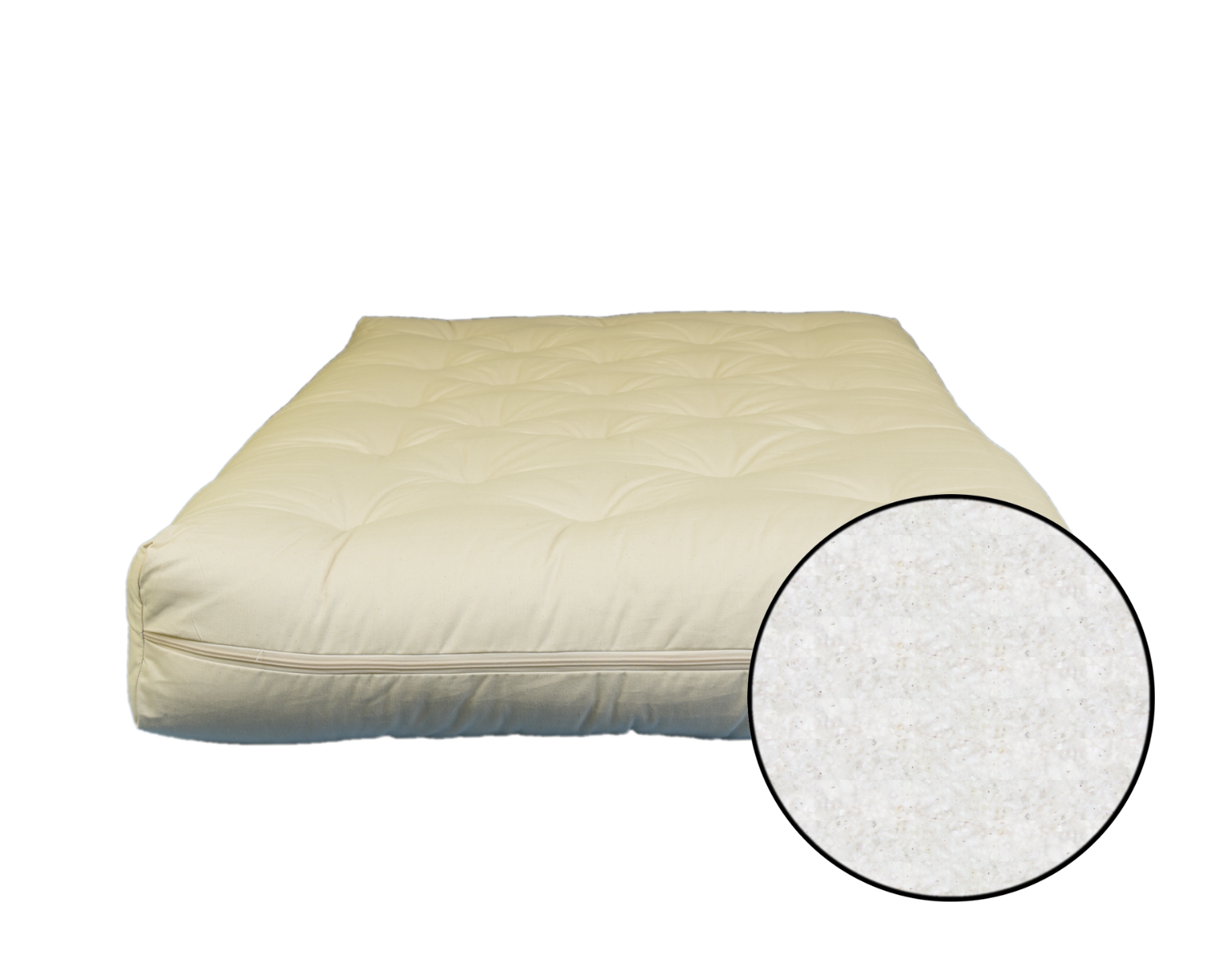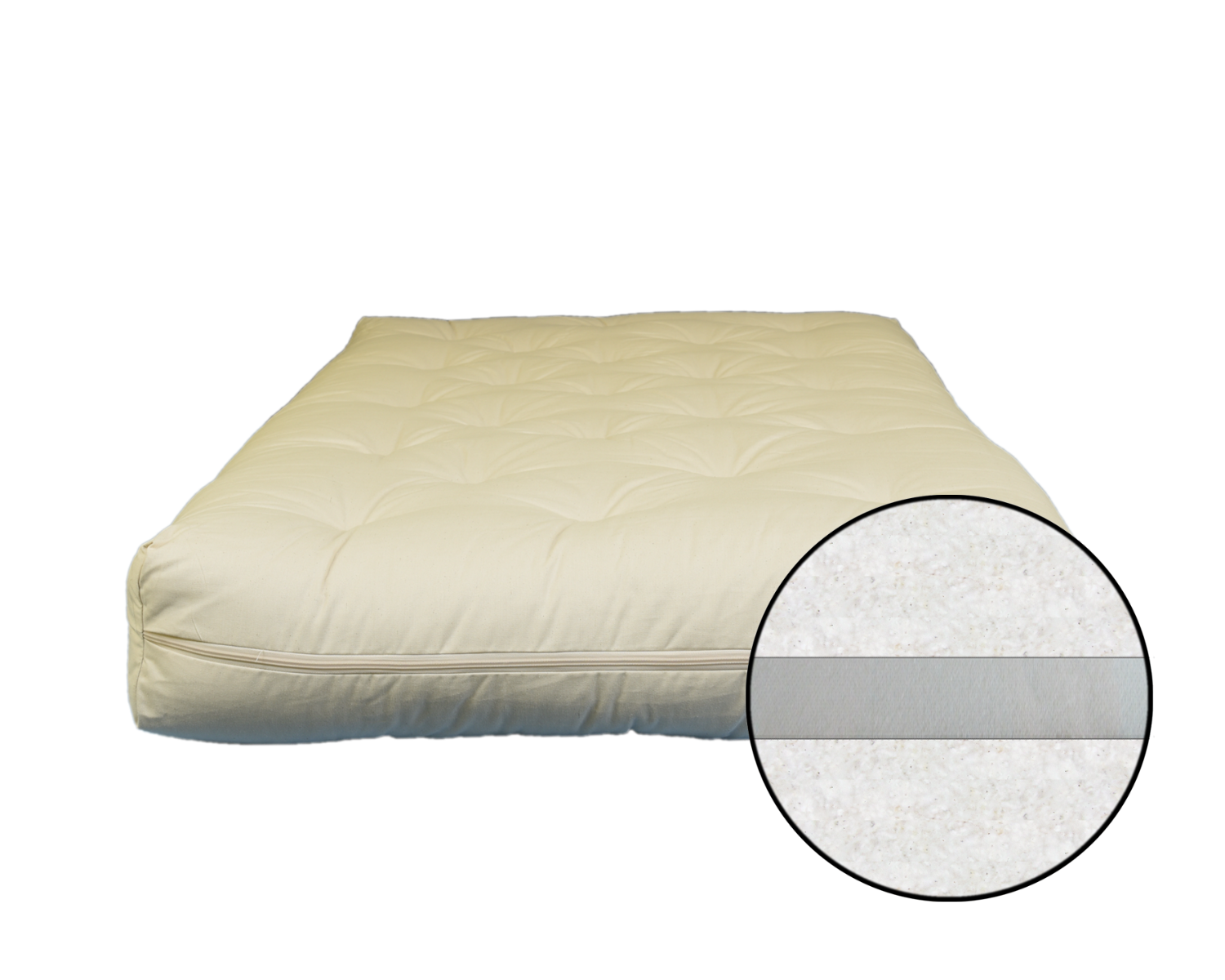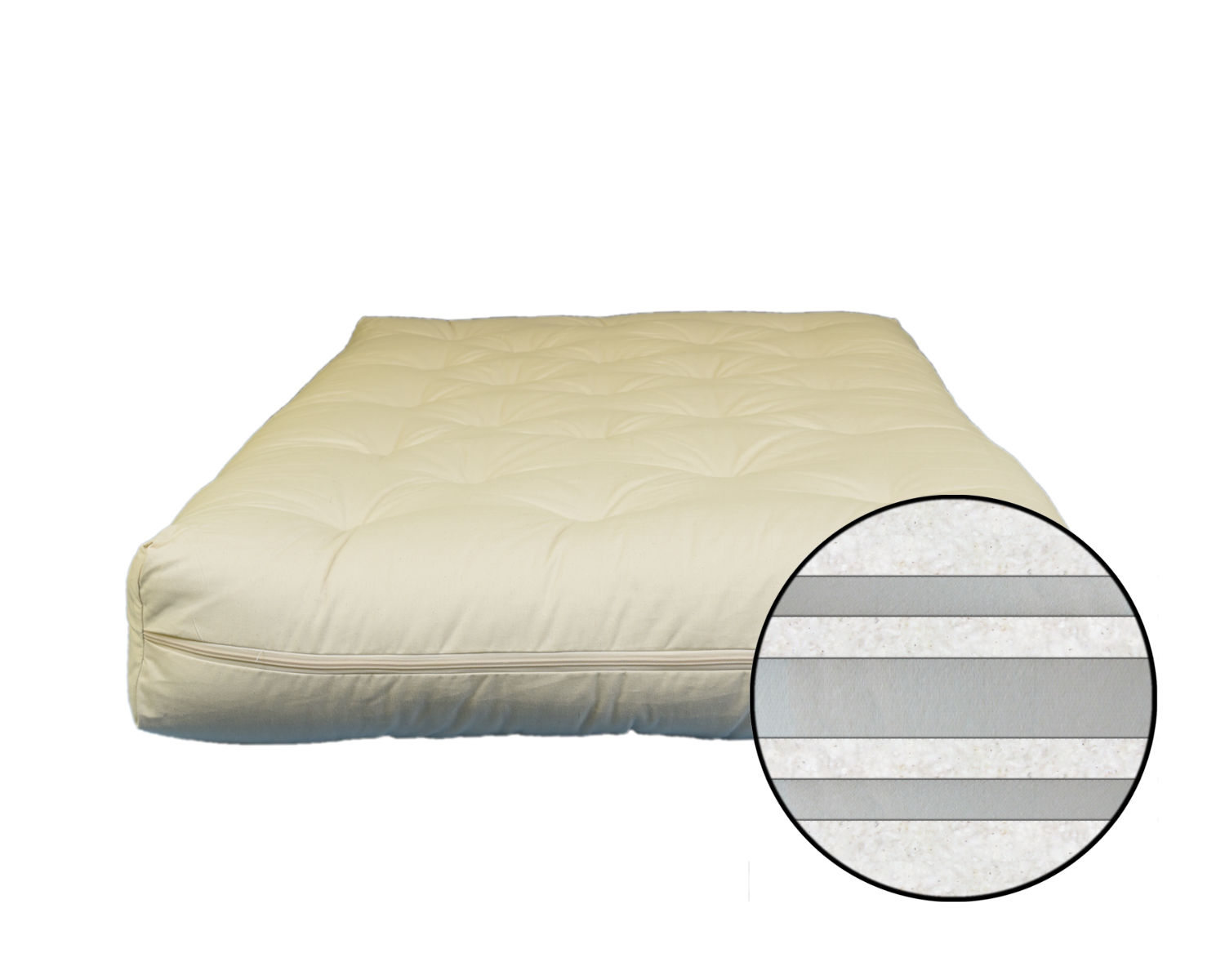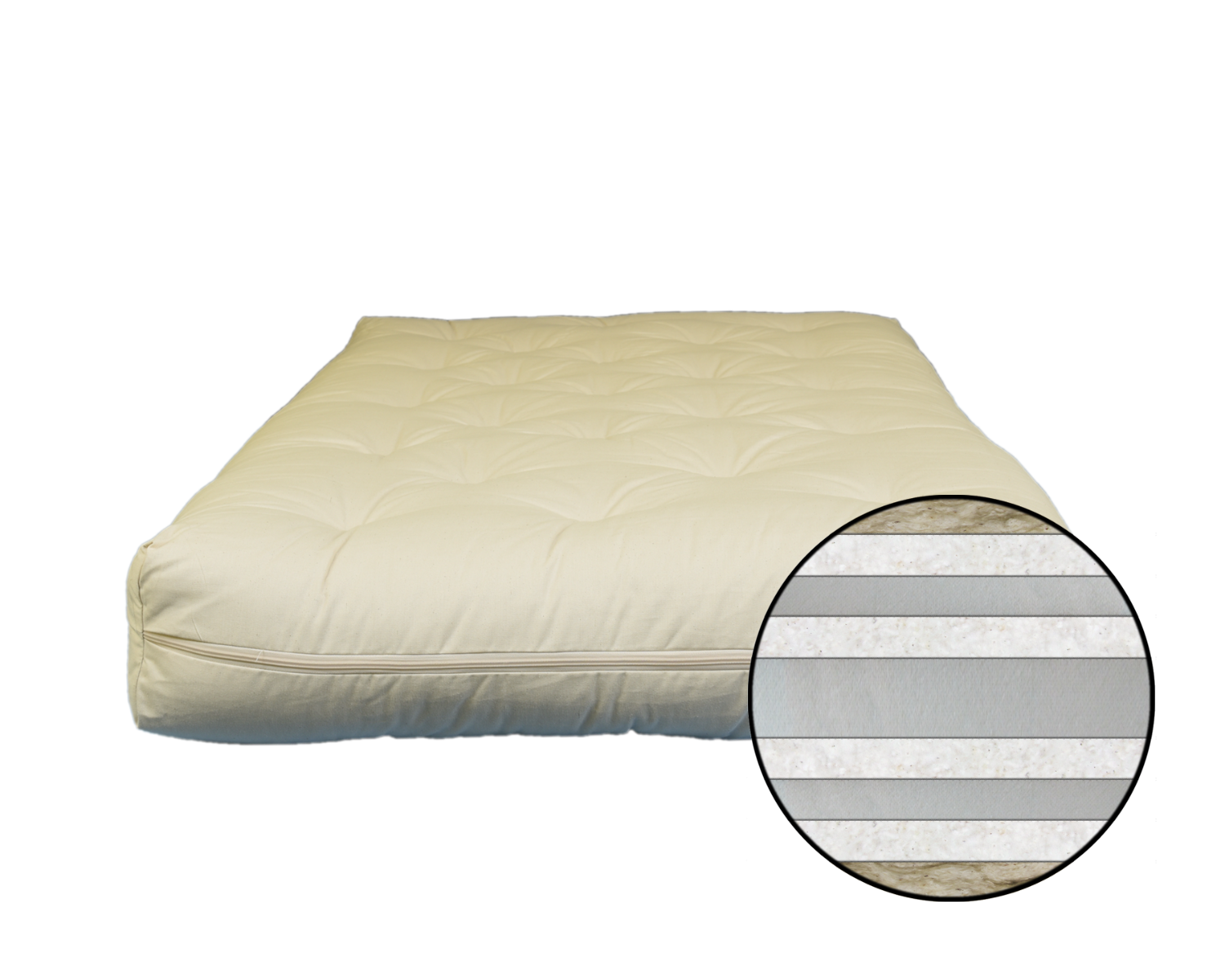It goes without saying that amongst everything else, the quality of your sleep depends majorly upon the mattress you use. If you are considering an organic futon mattress, this guide will help you know everything about it.
What is a Futon? – A brief overview
The word futon comes from the ancient Japanese language which simply means bedding or a cushion filled with dry leaves, cotton, feathers, or beads. It is an inherent part of Japanese culture and is commonly found in Japanese homes. In Japan, a futon mattress can also be found placed on top of a mat or a bed frame known as a tatami.
Due to their lightweight and portability, traditional Japanese culture adapted Futons to their daily lives. They could be moved easily and placed away in a closet to free up space for other uses almost daily.
Traditional futons were made from dry leaves, cotton, animal and bird feathers, etc. It made them extremely lightweight, but they needed to be dry-aired and sun-dried every day to keep them dry, damp-free, and moisture free. Being lightweight and portable, they could be carried for short travels and voyages as well.
With time futons evolved and now you can get an organic futon mattress that is made from all-natural sustainable sources such as latex, wool, or cotton.
The Structure of a Futon
In simple terms, a futon consists of three components or layers. There is the main mattress layer which lays above the supportive layer, and it further has a covering layer on the top for comfort.
The main mattress is known as shikibuton in Japanese. They are normally thicker than the rest of the components and have the most volume of materials inside them.
The covering layer on top is known as kakebuton and is made of lighter materials such as feathers or cotton. Traditionally, these three layers or components are separate from each other and each together forms a traditional Japanese futon.
However, many modern western-style futons integrate these components into one single component. Besides, modern western organic futon mattresses use materials such as latex, wool, cotton, etc., so they are comfortable for your needs, and healthy for sleep as well.
Futon’s Journey from Ancient Japan to Modern Times
The earliest references to Futons are found from around the 14th century in Japan. But, futons started to enter European and American houses in the late 19th century and started becoming popular in the western world from the early 20th century onward. By the 1980s, futons became fashionable in many North American houses.
Adopting the western atmosphere, their living customs and styles, and the advent of modern technology, people started experimenting with traditional futons with different materials to suit their needs. As a result, futons became versatile in adaptability and use.
Types and Variants of Futons
From the traditional three-part futons consisting of a tatami mat, the shikibuton, and kakebuton, Futons have seen tremendous makeovers over the years. Nevertheless, modern futons are as comfortable as a regular bed or a couch, yet they are portable. Below we mention the most commonly available types and variants of futons on the market.
1. Convertible Sofas
It is a modern take on Futons and they come in a single frame with an integrated futon mattress. They come in various sizes and with or without an armrest. As the name suggests, a convertible sofa futon can be converted into a full-fledged sleeping bed.
The differential factor here is the frame of the futon beds which makes them multi-purpose. There are various convertible designs too such as a two-fold or a three-fold futon. A two-fold futon has eight base slates – four for each foldable side and can be straightened to make it into a bed. It is sturdy and provides a stable sleeping platform.
A three-fold futon, on the other hand, has an extra foldable side that provides space for the legs to relax. It can be made into a two-fold sofa to sit comfortably and also, converted into a full-fledged bed. It is the most versatile design one can find for modern futons.
2. Loveseat Futons
You can find a Futon squeezed into a cozy corner for a single person or a couple to sit together. Thus, the name Loveseat for such futons. A loveseat futon can also double up as a bed for a single person to sleep at night. It is suitable for small rooms and can also fill up corner spaces in a large room.
3. Futon and Mattress Blend
The futon’s versatility continues and it contributes to other forms as well. Many people prefer futon frames and combine them with a regular mattress to sleep on as a regular bed. Since a high-quality futon frame has a very long life, an organic futon mattress and frame blend also give people the freedom to change their mattresses when they become old and worn out.
Western Futon Vs Japanese Shikibuton
Though the underlying theme and design principle came from its Japanese roots, a modern take on futons in the west has made it look different. As a result, western futon differs in its philosophy, style, and use from Japanese shikibuton.
Western futons specifically are multipurpose furniture sets. They can be used as a sofa during the day and converted into a full-fledged bed during the night. A western futon mattress is a part of this convertible sofa cum bed furniture. On the other hand, a traditional Japanese shikibuton is meant to be used on the floor or a mat during the night and put away in the morning.
Another key difference between both types of futon mattresses is the thickness. Since a shikibuton is meant to be used on the floor and put away in the morning, they are generally thinner than their western counterparts.
A typical western futon’s thickness ranges from approximately 7 to 8 inches. Whereas a shikibuton is only around 4 inches thick, making it very lightweight and portable.
What are the Benefits of a Futon?
There are many benefits of a futon mattress. They are lightweight, sturdy, and portable, providing excellent pressure relief and comfortable sleep, and much more. Let us discuss futons in detail.
1. 100% Organic, Natural, and Chemical-Free
The materials inside an organic futon mattress are organically obtained from natural sources. The latex, wool, or cotton used in making them are organic, natural, and chemical-free. All the materials used in BioSleep Concept’s bedding materials have gold-standard global certifications. You can be assured that it is completely safe and harmless.
2. Anti-microbial and dust-mite resistant
Being natural and organic, you will be using a futon mattress that is completely antimicrobial and resistant to dust mites. No harmful chemicals are used in its manufacture and it does not emit any toxic chemical gasses at night.
3. Excellent Pressure Relief
The lightweight nature of the materials inside the futons ensures that they are highly breathable. As a result, air passes through and fro easily. This helps it in staying fluffy, fresh, and cozy. If your back hurts, especially if you are a back sleeper, then sleeping on a futon can help you with a night of sound sleep because of its medium firmness. The pressure on your back is relieved due to its firmness level, fluff, and optimum bounce.
4. Durable and Sturdy
Modern futons are highly durable, and some of them can last for almost three decades long. A natural latex organic futon mattress for example will last for as long as 20 to 30 years. With proper care and maintenance, one can reap the benefits of their investments for a long time to come.
5. Sustainable and Eco-friendly
All BioSleep Concept’s products are organically obtained from sustainable natural resources. They are biodegradable and eco-friendly too. What this means is that at the end of the product’s life, the materials when discarded will get mixed on the earth’s soil. It will not produce any toxic wastes and you can be assured that you have played your part as a responsible global citizen to reduce carbon emissions and toxic wastes.
6. Daily Use Design
Since a futon is lightweight, it can be carried and moved easily from one place to another. This is the reason why many people prefer a futon for camping, short travels, or voyages. It can be a very handy piece of furniture, especially, when there is a surge of visitors or guests in your house.
Taking Care of Your Futons
Futons are easy to maintain and do not demand much from the users. It is one of the main benefits of using a Futon. To keep your futons well functioning, follow the below-mentioned tips.
-
Flip the mattress often, ideally once every 2-3 weeks to ensure it remains fluffy and wears out evenly. It also prevents developing body impressions on the futon mattress.
-
Air it in sunlight, ideally daily but at least twice a week, so that it remains fresh and fluffy, and does not develop any fungal bacteria.
-
When not in use for long periods, you can tuck it away in a clean and dry cupboard. Ensure you air dry it periodically though.
-
To clean a futon from dust, you can use a vacuum cleaner.
Wrap-Up
Whether you are constrained by space or you have a surprise visitor in your home, an organic futon mattress from BioSleep Concept can save your day. It can save you a lot of space too. You can have a comfortable and cozy sleep at night on it, and you can rest assured that your guests will slumber like a child on them.










